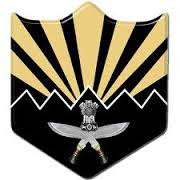 IIt might not be music to the ears of his political opponents, but Prime Minister Narendra Modi did manage to get some rhythm on the drums and cymbals at Mawphlang on Saturday.
IIt might not be music to the ears of his political opponents, but Prime Minister Narendra Modi did manage to get some rhythm on the drums and cymbals at Mawphlang on Saturday.
Taking time off from his busy schedule, Modi played traditional musical instruments from Meghalaya. He tried his hands on the Khasi drum known as Ksiang and Nakra Bom at the Mawphlang heritage village, about 25 kms from here.
Not satisfied with just the drum, he tried his hands at the hand-held cymbals much to the amusement of the traditional dancers, while local musicians played the drums.
Visibly impressed with his effort and also the colourful dance and attire of the troupe, Modi then clicked pictures of them. He later happily chatted with locals sipping a hot cup of tea to beat the chilly weather in the area, which is home to the famous sacred grooves.
The Prime Minister was also shown around the village where the artists showcased some of the local artifacts and the traditional methods of tool making. The Prime Minister also took a keen interest at the locks made by the local locksmiths.
Modi was accompanied by Governor, V Shanmuganathan, Chief Minister, Mukul Sangma and Union Minister DoNER, Jitendra Singh.
Earlier in the morning, the Prime Minister went to Mattilang Amusement Park in Upper Shillong and visited the Elephant falls.
He took some pictures of himself with the falls at the backdrop. The falls is one important tourist spots of the State where the cascading water is said to give the impression of the head and trunk of an Elephant’s, hence the name.
Modi who stayed overnight here at the Raj Bhavan witnessed a cultural show at the State Convention Centre last evening. The Shillong Chamber Choir performed before the Prime Minister and other dignitaries.
The North East Zone Cultural Centre presented “Colours of the North East,” a cultural dance show of the eight north-eastern states.
The Prime Minister was scheduled to visit the Ramakrishna Mission Vivekananda Cultural Centre at Quinton road here and the Catholic Cathedral Church at Dhankheti, but these itineraries were cancelled.
Later in the afternoon, the Prime Minister took an Air Force chopper from the Eastern Air Command’s helipad and left for Guwahati.







